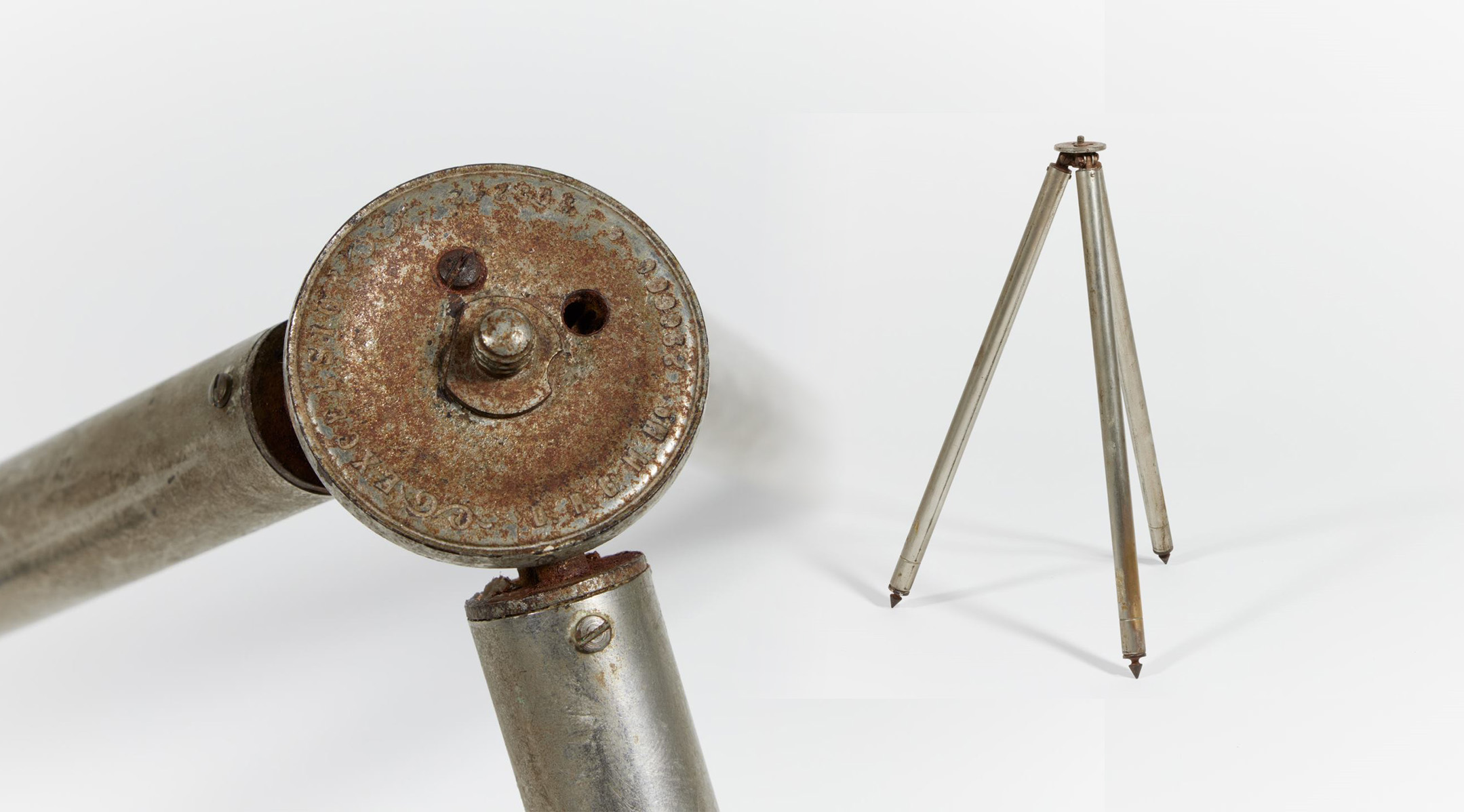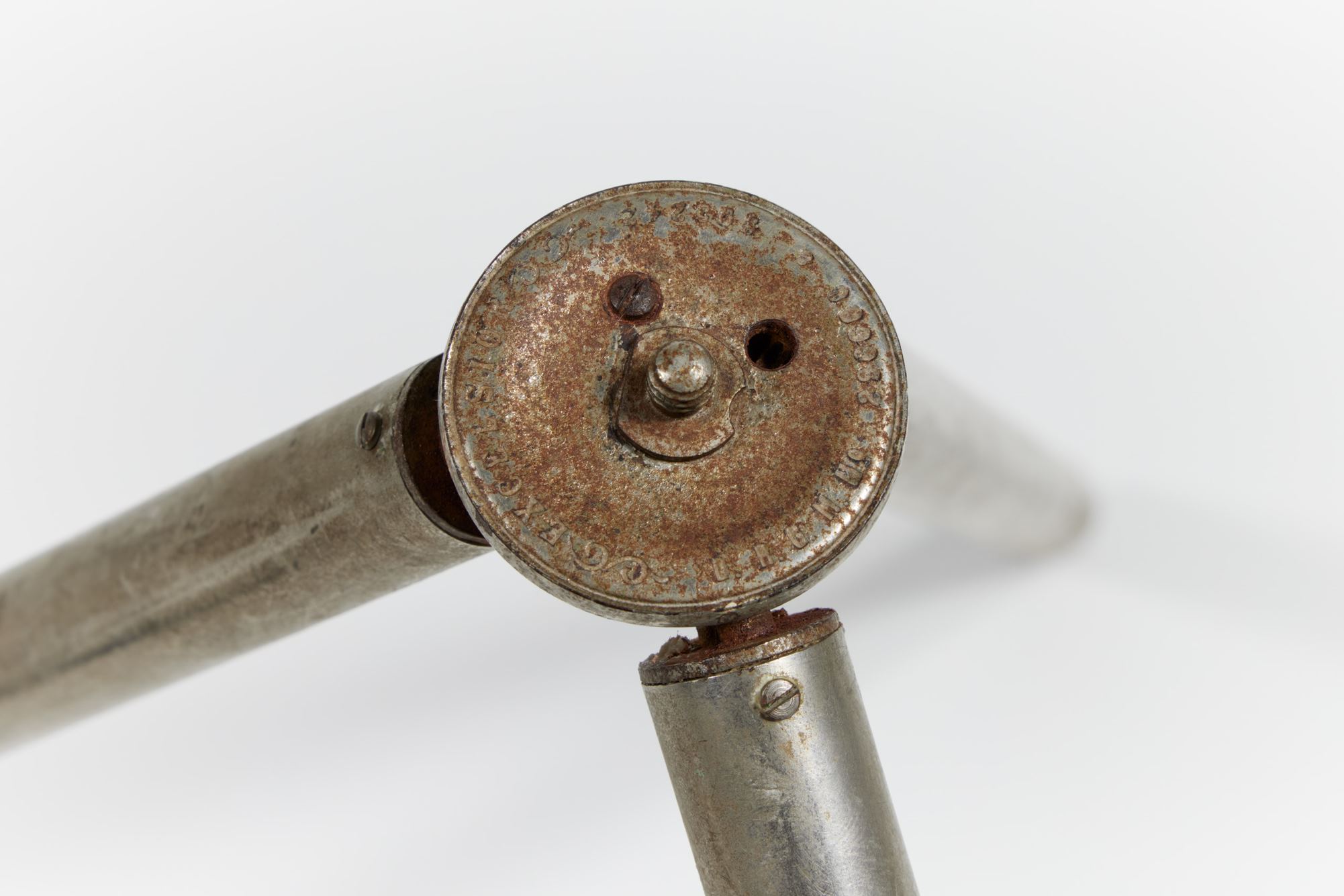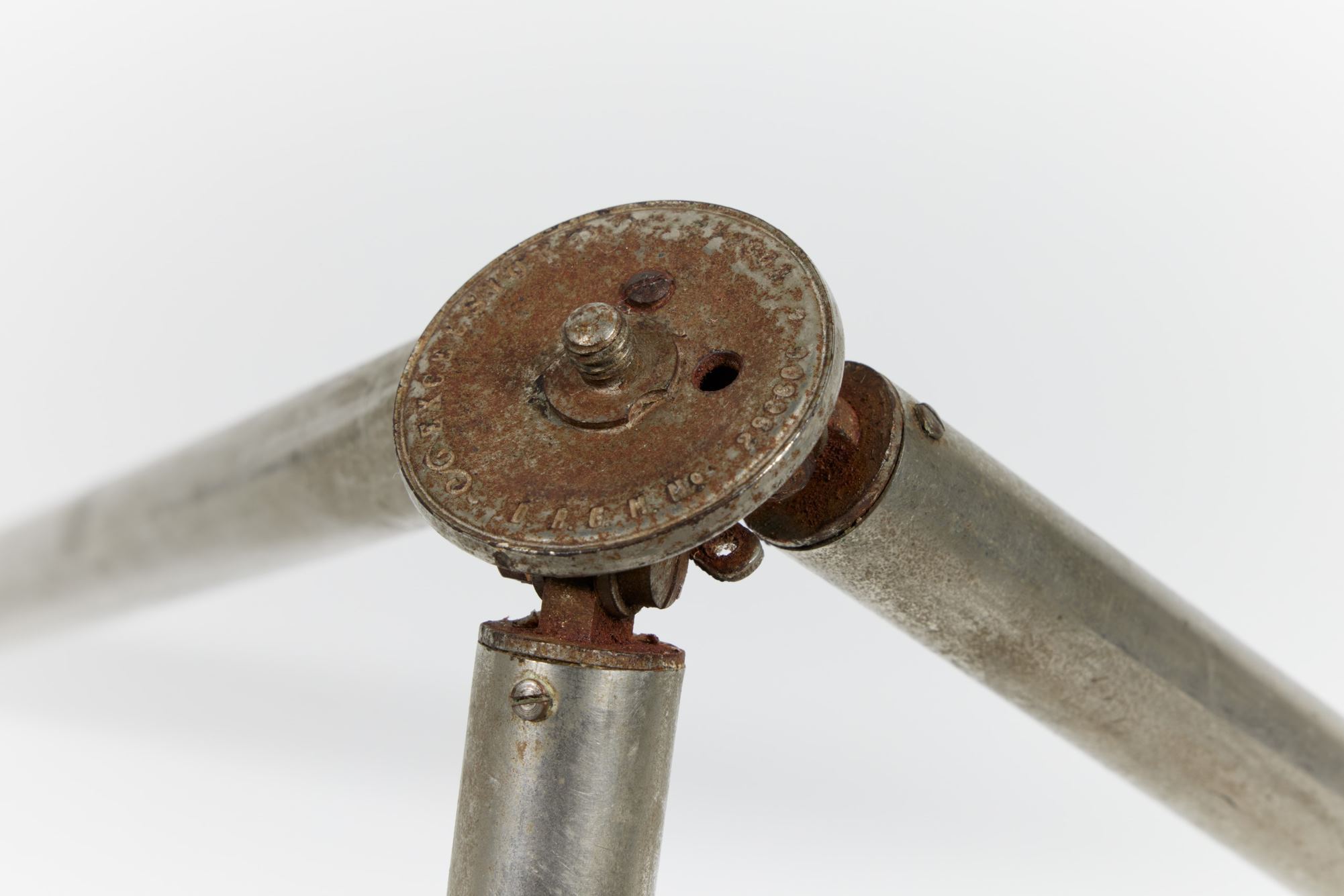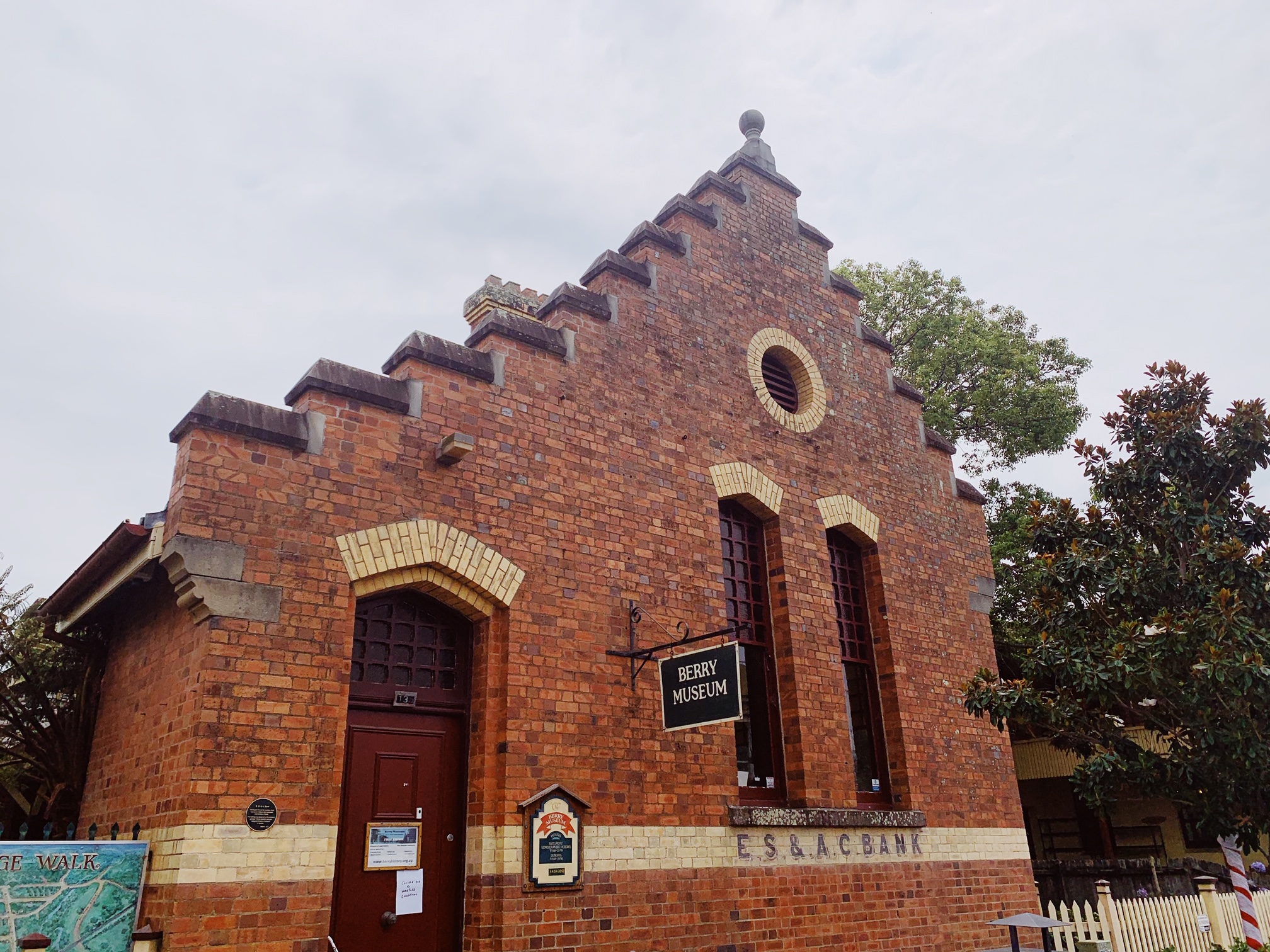Ever Upward
James Wilson’s Telescoping Tripod
In the 1890s, it was fashionable for well-to-do gentlemen to experiment with photography. It took someone with both time and money to be a successful amateur photographer and James C. Wilson (1834-1901) certainly fit the bill.
Born in Ireland, Wilson emigrated to Australia in 1857 and quickly rose to prominence as the first mayor and surveyor of the Borough of Broughton Vale (now known as Berry, New South Wales). He would go on to become a well-respected businessman and landowner among European settlers in the district – one with an appropriately dignified hobby to boot.
This tripod, owned by Wilson, is a model called the ‘Excelsior’ which means ‘Ever Upward’ in Latin. This name features the tripod’s major selling point: the lightweight, telescoping design of the legs which could extend from around 40 centimetres up to 1.2 metres in length. The initials DRGM (Deutsches Reich Gebrauchs Muster) are inscribed on the head plate. These initials can be found on patented items made in Germany and Austria from 1891 until just before the end of WWII (1945). This dates the tripod to between 1891 and 1901, the year that James C. Wilson died.
This tripod clues us in to the type of man Wilson may have been. It was at this time that the first celluloid Kodak cameras entered into large-scale production and were advertised as the camera anybody could use – a handheld alternative to the laborious dry plate cameras which preceded them.
However, Kodak cameras were met with resistance from many professional photographers. Citing blurrier quality and a narrow focus, many preferred to stick with what they knew. But to use the larger and less portable dry plate camera, one required the proper support of a tripod like this.
This equipment paints the picture of a photographic traditionalist, someone who valued technical proficiency over simplicity and ease. It appears Wilson may have been a cut-above the average amateur.







